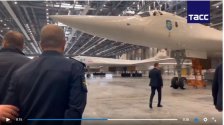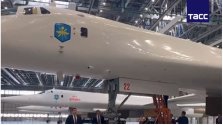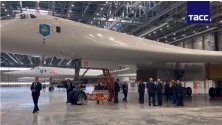You are using an out of date browser. It may not display this or other websites correctly.
You should upgrade or use an alternative browser.
You should upgrade or use an alternative browser.
Russian Military News, Reports, Data, etc.
- Thread starter tphuang
- Start date
Footage of the work of the Russian single-bucket military excavator EOV-3523, produced by the EKSMASH company, put into service in 2012. The EOV-3523 military excavator is designed for mechanization of excavation and loading work when equipping positions, areas where troops are located and areas where command posts are deployed. The EOV-3523 excavator is located on the KAMAZ-KAMAZ-53501 chassis and has better characteristics in comparison with the existing EOV 3521M excavator. The excavator is equipped with an air conditioning system and has a system to protect the chassis cabin from damage due to erroneous actions of the excavator operator during installation of working equipment. The excavator uses a hydraulic system from the German company Bosch Rexroht and can be equipped with replaceable working equipment intended for other work. The volume of the excavator bucket is 0.8 cubic meters, the maximum digging depth is 5 meters, the digging height is 8.6 meters, the soil unloading height is 6.1 meters, the digging radius is 8.5 meters. The weight of the excavator is 18.8 tons.
The engine will be replaced with a Russian oneThe Russian government did not fund the TVS-2MS because it used imported composites and a US Honeywell TPE331 turboprop engine.
So how is this 100% Made in Russia?
What is the military application of a drone like this?The heavy transport unmanned aerial aircraft of the ultra-short take-off and landing “Partizan” has completed the first stage of flight testing. The UAV is based on the TVS-2MS aircraft. The flight of the heavy UAV lasted 20 minutes at an altitude of 200 meters at speeds from 50 to 200 kilometers per hour. During testing, a pilot was in the cockpit to monitor the parameters. An aircraft with a drone function was developed at the Siberian Aviation Research Institute named after Chaplygin. The Partizan UAV is designed to transport cargo and can be used for civil and military purposes. The Russian Partizan UAV is equipped with a hybrid propulsion system and can take off and land on a site measuring 50 by 50 meters, with obstacles at the border of the site up to 15 meters high. The flight range of the Partizan UAV is up to 1 thousand kilometers, at an altitude of up to 8000 meters with a maximum speed of over 300 km/h, payload weight of up to one ton. As reported, the Partizan unmanned aircraft will be 100% made in Russia. In 2024, it is planned to deploy a production complex and produce 10 serial copies of the Partizan heavy UAV.
Delivery and storage of fuel in field storage facilities of the Russian Army. Personnel of the work of units of the fuel logistics service of the Russian Army. The video shows the delivery and transfer of fuel to field storage facilities of the Russian army. Fuel is transported by railway tanks; upon arrival at the station, the presence and serviceability of seals on the railway tanks are checked, after which samples of petroleum products are taken. A fuel sample is taken in each tank, from the bottom, top and middle of the tank. After the laboratory concludes that the quality of the fuel meets the established standards, the fuel is drained.
Loading devices are connected and fuel is pumped into polymer elastic tanks of the field warehouse. Polymer tanks are very convenient; they can be quickly camouflaged and placed on any area of the terrain. The polymer tank is highly durable and has a capacity of 50 cubic meters. Next, the fuel arrives at a stationary warehouse, from where tankers deliver it to the units. Vehicles intended for refueling and transporting fuel are camouflaged and additionally armored.
Loading devices are connected and fuel is pumped into polymer elastic tanks of the field warehouse. Polymer tanks are very convenient; they can be quickly camouflaged and placed on any area of the terrain. The polymer tank is highly durable and has a capacity of 50 cubic meters. Next, the fuel arrives at a stationary warehouse, from where tankers deliver it to the units. Vehicles intended for refueling and transporting fuel are camouflaged and additionally armored.
Russian specialists from the Sukhoi Design Bureau have successfully tested a prototype of a huge heavy vertical take-off and landing UAV. The BTS-VAB UAV is equipped with a hybrid power plant; the drone includes an electric lifting power plant and a piston propulsion engine. Vertical takeoff and landing are carried out by lifting electric motors located on the wing beams. Take-off, route flight and landing are performed fully automatically, without operator participation. During tests on the flight stand, control algorithms and operation of takeoff, hovering and landing systems were tested. The Sukhoi Design Bureau UAV does not require specially prepared sites for takeoff and landing and will allow solving a wide range of transport and logistics tasks. The drone can also accommodate weapons or reconnaissance equipment; the payload capacity of 300 kilograms allows this to be done. At the moment it is known that the UAV’s flight range will be up to 500 kilometers.
A new batch of BMP-3 manufactured in 2024 was sent by Kurganmashzavod to the Russian troops. Quite often they ask why the BMP-3 does not have protection. According to the company, additional protection kits, anti-cumulative grilles and armored screens, are supplied to the customer as separate products and are installed on the equipment upon the arrival of the combat vehicles at the unit. Now the number of Russian BMP-3s transferred to the army since the beginning of this year is one and a half times greater than the volumes of the same period in 2023.
Last edited:
@Soldier30 Is that actually your youtube channel?
Newbuilt Tu-160M. Glossy white finish compared to the standard Tu-160 plus what seems to be MAW sensors under the cockpit
https://www.reddit.com/r/UkraineRussiaReport/comments/1awacmb







